Live Shopping vs. Traditional E-Commerce: A Comparative Analysis
Live Shopping vs. Traditional
E-Commerce:
A Comparative Analysis
Live shopping, a booming $129.6 billion industry, is transforming retail alongside traditional e-commerce. Unlike traditional browsing and checkout, live shopping leverages social media for real-time demos and instant purchases.


The digital retail landscape is undergoing a dynamic transformation, with Live Shopping emerging as a powerful force alongside traditional e-commerce.
Valued at an estimated $129.6 billion by the close of 2024¹, the Live Shopping phenomenon is sweeping the globe, creating a new frontier in the way consumers shop online. But how does Live Shopping stack up against traditional E-commerce?
Let’s explore the differences and synergies between these two approaches:
Traditional E-Commerce User Journey
Traditional E-commerce relies on a multi-step process that can lead to drop-off at each stage. Customers are bombarded with promotional messages, navigate to the webshop, browse for products, add them to a cart, and finally complete the checkout process.

Live shopping offers a more streamlined and engaging experience. Viewers are directly exposed to products in a captivating format, fostering a sense of connection and urgency. Questions can be answered in real-time, eliminating uncertainty and building trust. This creates a smoother flow, where viewers can seamlessly transition from discovery to purchase within the live stream itself.
Live Shopping User Journey
Live Shopping transforms the traditional customer journey into a dynamic and interactive experience. Businesses leverage their existing social media audience, inviting followers to join live events hosted directly on Facebook and Instagram. These live streams showcase products in real-time, allowing viewers to get a close-up look and ask questions directly.

The magic happens during the live event itself. Viewers can seamlessly add items to their carts by simply typing buy codes in the comments section. Upon expressing interest, customers then receive a custom link through Facebook or Instagram that whisks them directly to the brand's webshop for a smooth checkout process. This eliminates the need to navigate a separate online store and simplifies the path to purchase, fostering higher conversion rates for businesses and a more engaging shopping experience for consumers.
By taking a closer look at the differences between the two workflows, you will notice a few key distinctions:
Key Metrics Comparison
*Live Shopping on Facebook and Instagram (this is how most Sprii customers use it) is typically targeted at a business’ existing follower base. This means that in a lot of cases, this happens at 0 promotional cost, unless the company decides to bolster attendee rates by boosting Live events.
{{20x-banner}}
Benefits of Live Shopping
Higher Engagement and Conversion Rates
Live shopping provides an interactive experience that traditional E-Commerce simply cannot match. From the comfort of their couches, customers are handheld through the awareness, consideration, and decision phase with unparalleled ease.
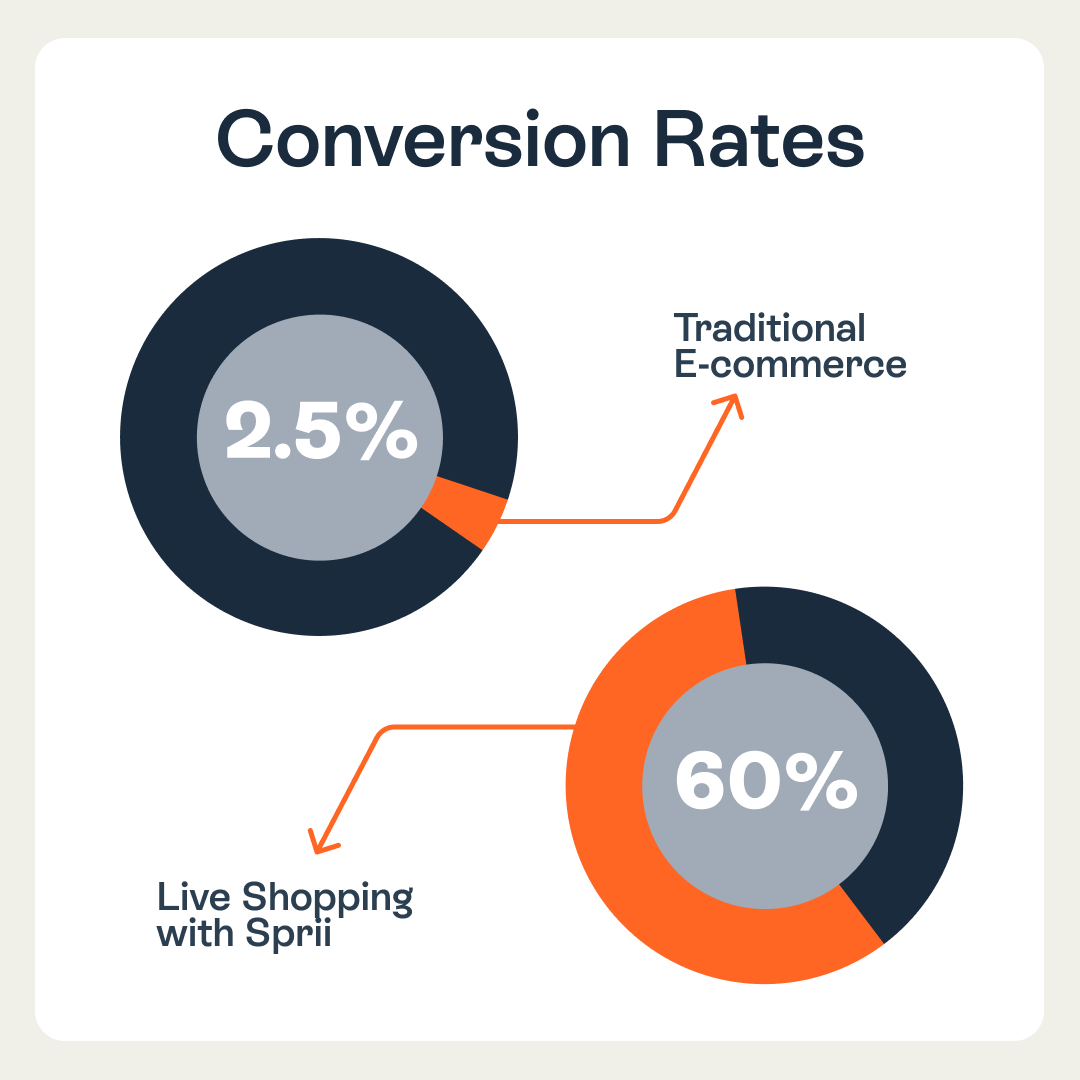
Even more, viewers spend significantly more time engaging with live shows—averaging between 15 to 30 minutes—compared to the mere 54 seconds they typically spend on a website. This increased engagement translates into lower cart abandonment and higher conversion rates, often ranging from 50% to 60%, compared to the 2.5% average for traditional e-commerce.
Accelerated Sales Funnel
The time to sell a product differs greatly between traditional E-Commerce and Live Shopping. Traditional E-Commerce sales can take hours to months, depending on factors like visibility, SEO, and competition.
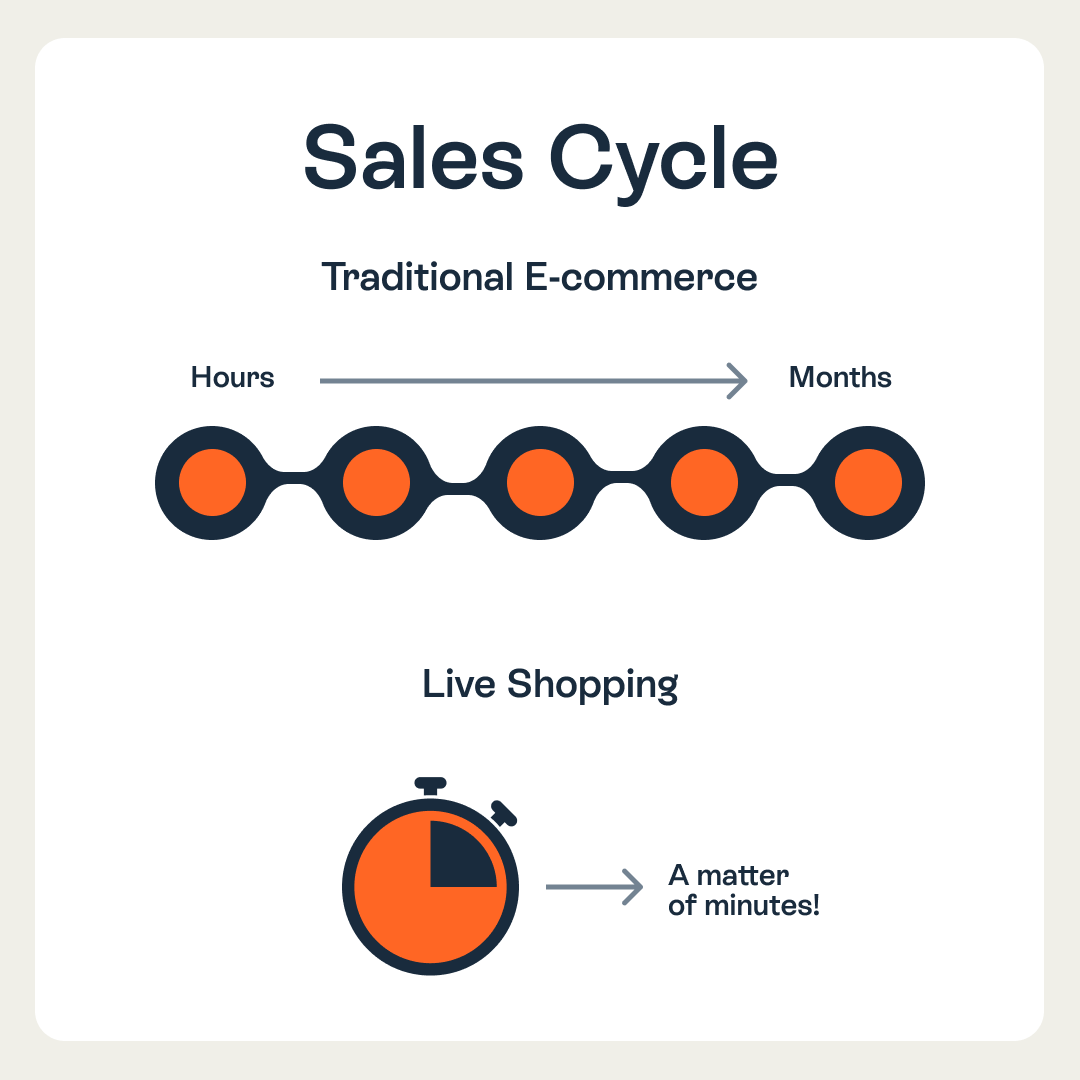
Here, customers browse, compare, and read reviews before buying. Live Shopping, however, often leads to quicker sales, within minutes to hours, due to real-time engagement, product demonstrations, and limited-time offers, creating a sense of urgency and encouraging immediate purchases.
Lower Return Rates
The immersive nature of Live Shopping, where hosts can demonstrate products in detail and answer questions in real-time, leads to better-informed purchasing decisions. This reduces the average return rate to between 10% and 15%, compared to the 20% to 30% seen in traditional E-Commerce.

Symbiotic Relationship with Traditional Retail
Just as television did not replace cinemas, Live Shopping does not aim to supplant traditional E-Commerce but rather to complement it.
Brands, retailers, and E-Commerce businesses are increasingly turning to Live Shopping to bridge the gap between physical stores and online communities, fostering a symbiotic relationship where each channel supports the other.

Conclusion
The rise of Live Shopping is a testament to the evolving nature of consumer behavior and technological advancements. While traditional E-Commerce continues to be a mainstay, Live Shopping offers a dynamic, engaging, and cost-effective alternative that enhances the overall shopping experience.
As the retail landscape continues to evolve, embracing both traditional and Live Shopping methods will be crucial for brands aiming to stay competitive and meet the diverse needs of their customers.
Sources:
1. Ghost Retail
2. Sprii Data
3. Shopify
4. HubSpot
5. Persado
6. Shopify
7. FirstPageSage
{{20x-banner}}
Customer Stories
Here at Sprii, our forward-thinking community of 2,400 customers has been at the forefront, selling an impressive 12 million products, resulting in over €213 million in revenue—all within the past three years since the launch of our award-winning Live Shopping platform!
Read our customer stories to explore real-life examples that demonstrate the power of Live Shopping.
Discover how Live Shopping
can 20X your conversions
Experience Live Shopping with Sprii
%201.webp)
.webp)
.webp)

Live Shopping event works on FB, IG and your website
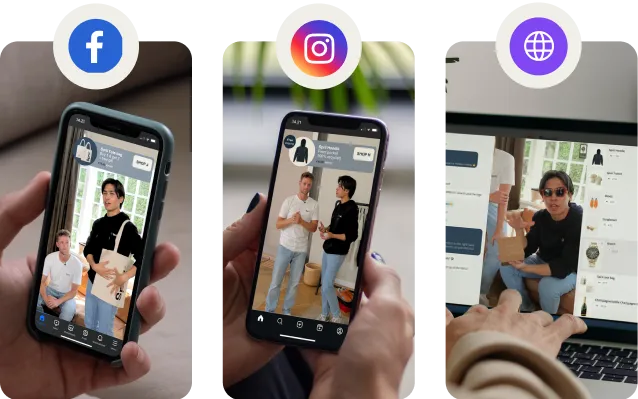
5 ways to win Black Friday

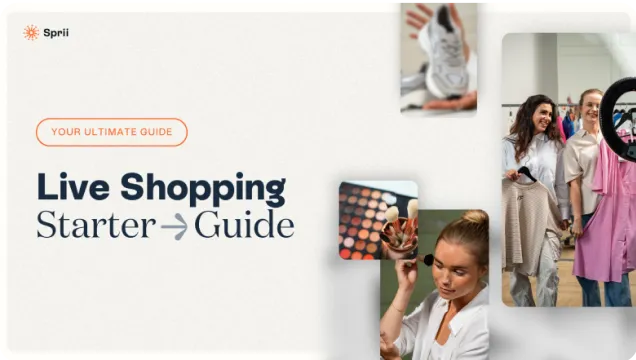



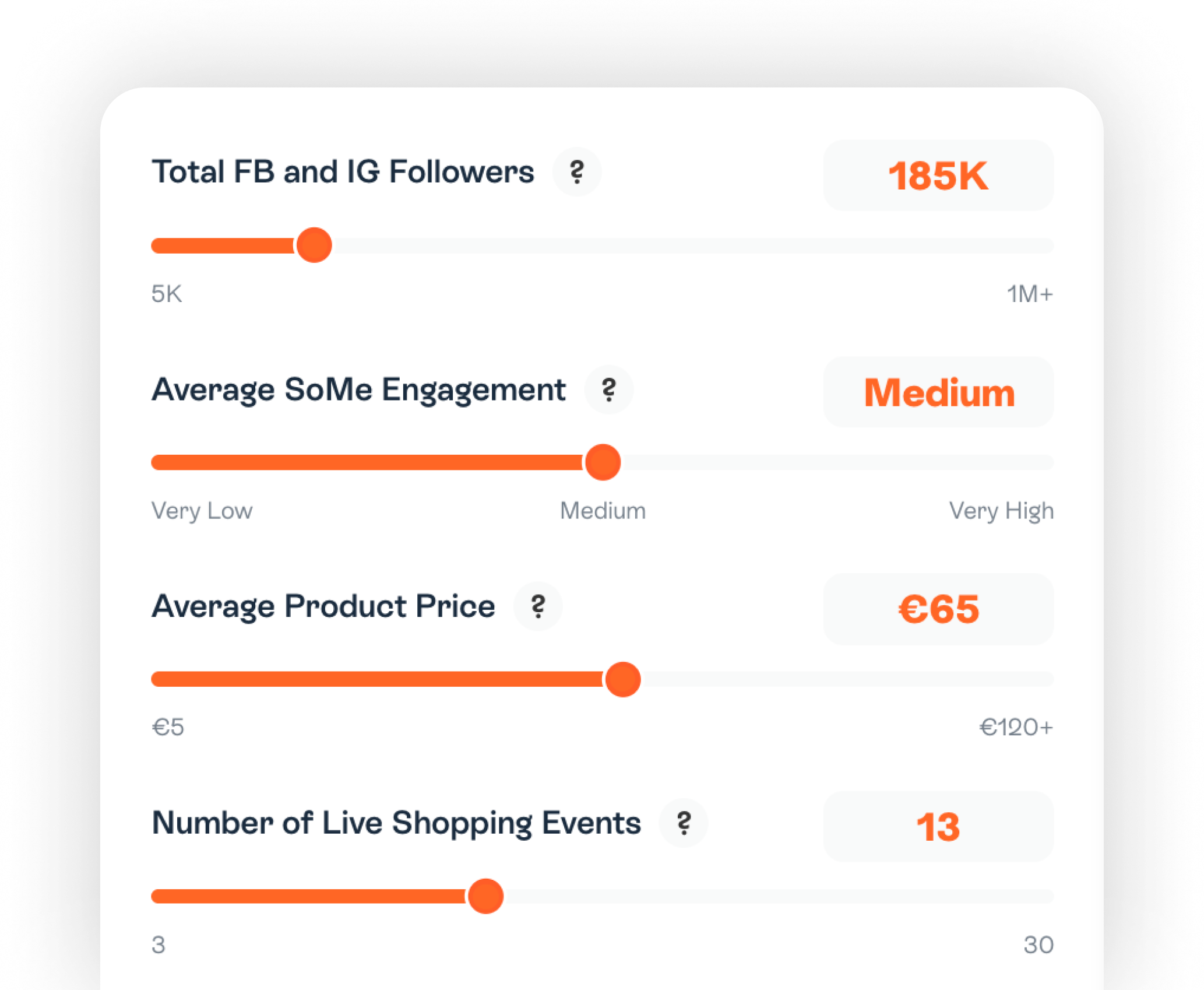















.png)